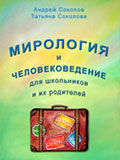What is money?
From the book by Andrey Sokolov and Tatiana Sokolova "The world and humans for students and their parents".
Money.
Money is a versatile measuring instrument. It allows you to compare a loaf of bread to a tractor, a sandwich to a movie, a ride on an ice cream carousel. This happens by comparing their cost.
Due to the fact that money allows you to compare completely dissimilar goods and services, they are very convenient to use. Having rendered a service to someone and received payment for it, sold the goods and put the received in your pocket or wallet, you can safely go to the store, leave for another city and even to the other end of the country and be sure that you can exchange the received papers and coins for absolutely other goods and services, pay for something else.
This is an important quality of money.
Perhaps you once changed in class with candy wrappers or colored glass. And sometimes you needed candy wrappers and you changed your eraser for a couple of beautiful candy wrappers. And it worked well within the classroom. But in another class, school, and even more so in a store, it would not work. No one would have thought of exchanging a lollipop or even a pencil stub for a couple of candy wrappers. But for money you could buy a lollipop.
This is the versatility of money and the limitations of candy wrappers. You can pay off with candy wrappers only in your class, if everyone has agreed that you can pay with them.
But even money can be "candy wrappers". And this happens when the money that can be paid in one country is not recognized in another. Just like your candy wrappers are not recognized in another school or store.
How can you check whether your country's money is "candy wrappers" or not? The easiest way is to come to another country and look at the price tags in the store. If the name of the money that is in your pocket is written on them, then everything is in order - the money of your country is recognized in this one too. This situation may arise, for example, if you came from France to Germany, from Spain to Finland, or from the Czech Republic to Latvia. But if you come to Germany, for example, from the USA, Japan, China, Ukraine, Belarus, Kazakhstan or Russia, you will not be able to pay for ice cream at the checkout of the store with the money that you brought with you. You will have to go to the bank. And just then it turns out - "candy wrappers" in your pocket or real money.
If the bank calmly takes the money of your country and exchanges it for the money of the country you came to, then you have real money. If not - "candy wrappers".
Even the money of your country in your own country may turn out to be "candy wrappers". The point is that money changes periodically. This may be due to a change in design, protection from counterfeiters, a change in the state system in the country, or for other reasons. Then, after some time, old-style money is no longer accepted in stores to pay for goods.
